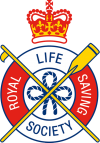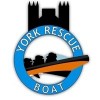Lesson Policy and Procedures
Lessons are non- transferable and non-refundable.
Non-attended lessons are forfeited and are non- refundable.
Parents/Carers are responsible for their children at all times outside of the lesson.
Eating is strictly prohibited during lessons. It is the parent / carers responsibility to ensure your child/children are not eating food and or chewing gum.
For reasons of health, hygiene and swimming efficiency; swimming hats are compulsory and must be worn at all venues.
Structure and Delivery
Class lessons are 30minutes in duration. Registration, welcome and the application of secure swimming aids are included within the lesson duration.
Carol Saunders Swim School Lead Teachers are minimum:
- Swim England or STA Trained
- Insured members of their governing body
- Enhanced DBS certified
- Lifesaving / First Aid qualified
- Safeguarding and Protecting Children and Vulnerable Adults qualified
Swimmers will be physically supported in the water by teachers and assistants. By continuing with your booking and attending lessons you give permission for Carol Saunders Swim School teachers and assistants to provide manual / physical support to your child during swimming lessons.
Carol Saunders Swim School teachers plan and deliver lessons which compliment early year’s foundation stages and the national curriculum through a games based approach with lots of fun, songs, interaction and sensory experiences.
Secure swimming aids (shark fin / swim belt) are applied to swimmers up to and including Stage 1, 2, 3 and 4.
Swimming aids (woggles, floats, boards, pull-buoys, etc) will be used by all swimmers at all Stages.
The use of buoyancy and swimming aids are not detrimental to a swimmer’s development, progress or performance.
The use of buoyancy and swimming aids are complementary to the development of the mechanics of learning to swim and ensuring the correct development of all swimming strokes and drills.
Swimmers can cover a lot of distance during a lesson and the use of swimming aids allows the completion of a distance using progressive practices with the repetition and reinforcement of correct technique.
Swimmers will have the opportunity to swim / perform water skills during lessons without the use of aids to ensure they learn and understand buoyancy and floatation.
We always do our utmost to meet the above pupil ratio’s, however, staff do go on holiday, are taken ill, etc and in the event these cannot be met, pupil to teacher ratios will always be within the recommended guidelines as published by the Institute of Sport and Recreation.
- Parent, Babies & Toddlers = 1:12 (1 Teacher to 12 Pairs (1Baby + 1Parent))
- Non-swimmers and beginners = 1:12
- 10m plus Improving swimmers = 1:20
- 25m plus Competent swimmers = 1:20
Lesson Completion
Once lessons are complete, all parents / carers must be readily available to collect their swimmer at the end of lessons from poolside.
Please make your way to the changing rooms (if applicable) appropriate to age and gender:
- Swimmers aged 8+ years old – children must use the appropriate changing room applicable to their gender.
- Swimmers under 8 years old – use the changing rooms according to parent / guardian gender.
- Please ensure you take everything with you including any rubbish / consumables.
Please ensure you take everything with you including nappies / rubbish / consumables.
Lesson Feedback
Written feedback in relation to swimmers progress can be requested once per term via you person swimmer ‘fish tank’ portal.Please do not approach teachers during lessons; their duty of care is to the swimmers and any distractions could result in accident / injury.
Accepting the element of risk undertaking Swimming Lessons
As with any physical activity, there are elements of risk. Carol Saunders Swim School risk assess every class type at every venue and put procedures in place to reduce the level of risk. By attending swimming lessons you are accepting the following risks:
- At times non-swimmers will let go of the wall or a float / woggle and may go under the water. This is part of learning to swim and the natural inquisitive nature of children exploring their surroundings and their limitations. Carol Saunders Swim School have trained lifeguards, teachers and assistants on hand to ensure any non-swimmers who do let go are spotted, approached calmly and encouraged to independently ‘right themselves’ back on to the swimming aid (float / woggle) and / or to make their way back to the wall. If they are struggling then they will be given manual assistance.
- At times weak swimmers will tire, they may let go of their float / woggle and may go under the water. This is part of learning to swim and the natural inquisitive nature of children exploring their surroundings and their limitations. Carol Saunders Swim School have trained lifeguards, teachers and assistants on hand to ensure any weak swimmers who do lose their swimming aids are spotted, approached calmly and encouraged to independently ‘right themselves’ back on to the swimming aid (float / woggle) and / or to make their way back to the wall. If they are struggling then they will be given manual assistance.
- Swimmers of all ages are expected and taught to attempt to exit and enter the water safely. Swimmers will still be encouraged to attempt to climb out and given instruction how this should be performed.
- A swimmer is not classed as a swimmer at Carol Saunders Swim School until they can swim all four strokes with competency and cover a minimum distance of 400m using competent swimming strokes.












